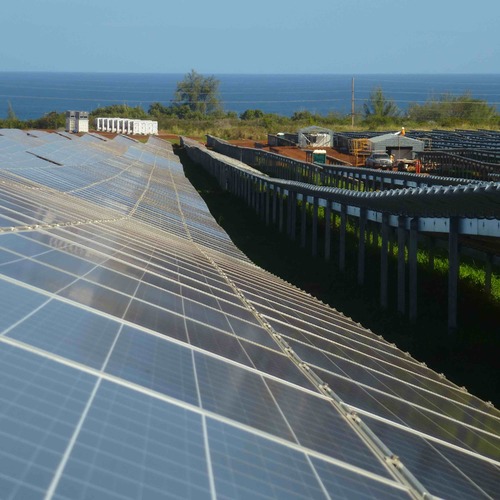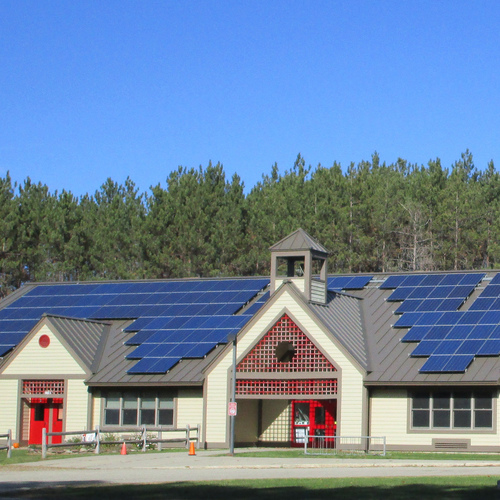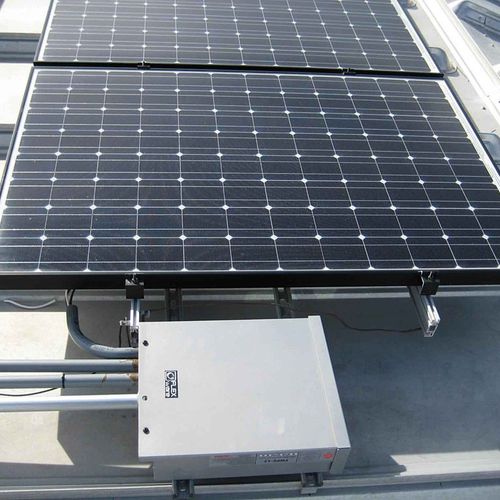
Image Credit: WikiCommons
Hawaii is the latest arena where homeowners are going head-to-head with their electric utility over residential solar installations.
According to a Reuters’ report, homeowners on the island of Oahu must now seek the permission of the Hawaiian Electric Co., and possibly pay for upgrades to nearby electrical circuits, before they can install solar panels on their own roofs.
The new rule went into effect in September. Reuters says the same rule has been in place on the other Hawaiian islands for some time, but it hasn’t caused the same kind of uproar as it has on Oahu, home to about three-quarters of the state’s population.
Hawaii is one of several states where utilities are seeking to change the rules for residential solar systems. Elsewhere, utility executives have complained that customers with solar installations aren’t paying their fair share for grid maintenance and put an unfair burden on non-solar customers.
Arizona Public Service now charges a fee for solar installations; in other states, utilities have sought to lower the amount they pay homeowners for the power they generate.
Rooftop power is ‘inconsistent’
On Oahu, the new rule has cut business in half for many solar installers. Permits for rooftop installations also have been trimmed by about half. Previously, solar installations had doubled every year since 2010, Reuters says.
Part of the trouble on Oahu is that Hawaiian Electric is running a small, independent power grid. The utility says rooftop installations there generate electricity inconsistently and make the power grid less safe and less reliable.
“It’s almost like you have a 200 MW power plant … and you don’t know what it’s going to do,” a Hawaiian Electric vice president told Reuters. “This is not about the electric company trying to put barriers in front of people.”
Hawaii has very high electric rates and, as a result, lots of homeowners have solar panels. Roughly 10% of Hawaiian Electric customers generate their own electricity, Reuters says, compared with 1.4% in California. Hawaii has set a goal of generating 40% of its power from renewable sources by the year 2030, the report said.
Weekly Newsletter
Get building science and energy efficiency advice, plus special offers, in your inbox.















One Comment
Solar Battles
The Hawaii electric VP should know better... roof top solarPV had been slowly entering their market. They had plenty of time to understand and study their distribution system. There are plenty of very detailed engineering studies that also demonstrate roof top solar when distributed over an area the size of even a smaller Hawaiian island... can smooth out the fluctuations from the clouds (Hoff & Perez). Weather forecasts -- and simply looking out the window can provide a pretty good idea if they need to start ramping up the fuel oil burners for electrical generation. If I remember correctly HECO's problems are also partly a result of a few disputes with regulators and rate structures... waiting to see who will blink first... Hawaii has a pretty well known geothermal capability... that has barely been developed. Wind had mostly been ignored upto a few years ago, and solarPV was considered to by something that nutty experimenters did.. And this on an island that nearly 100% of its electricity was from imported fuel oil.
The fee charged by APS is approximately $0.70/kW installed capacity... about $5/mo for many of the systems. Far different than the utility wanted... the utility lost the battle with their regulators. They had wanted fees several times that, and roll back of net metering... buying at the prevailing wholesale rates. While at the same time they are building several megawatt scale solarPV farms themselves.
HECO's problem in Hawaii is different. They need the power, the utility knows they need the power, but the infrastructure to support it hasn't caught up with the current times. On some islands, power outages -- without solar -- already occur. Old distribution systems can do that. Hanging some solar onto a weak distribution system can help... hanging lots on the weak system just moves the points where the system snaps.
HECO needs to fix their distribution system -- soon. But mean while customers that had invested into solar may go back and convert the systems into battery systems - backed up by the grid... not systems designed to share into the grid. It isn't just the residential customers that use power on the islands, but all those tourist locations like hotels and restaurants, many that have no option but to remain tied to the existing grid.
Moving away from fully grid tied doesn't help the residents or businesses on the island long term... they high cost of electricity is because of the high cost of imported fuel oil. Grid tied solarPV distributed across the islands would reduce the amount of fuel oil used... and begin the process to flatten out their electric rates.
But to fix those distribution lines - takes money -- and it means higher rates, which now means customers are moving more and more to solarPV -- and likely to off grid solarPV.
Log in or create an account to post a comment.
Sign up Log in